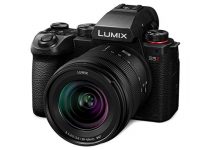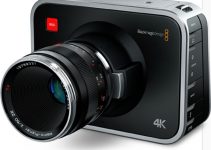Once Apple and other computer manufacturers began integrating Type-C Thunderbolt 3 interface in their own systems, content creators and technology enthusiasts were elated to discover that the overall computer performance could be increased dramatically, all due to the use of external GPUs. With the Thunderbolt 3 ports, it’s now possible to attach any PCIe-based GPU to your MacBook Pro or iMac, resulting in faster timeline performance and export times.
In the video below, Jeff Benjamin of 9to5Mac, explores the benefits of using external GPUs when editing in DaVinci Resolve on a Mac. He goes even further by attaching two, and even three external GPUs to see exactly how much performance can be gained from expanding his entry-level 13-inch MacBook Pro.
Before utilizing the external GPUs, Benjamin decided to see how much performance the MacBook Pro can pull out on its own using the built-in dual-core Intel-based processor and integrated Intel Iris graphics. Unfortunately, this entry-level configuration resulted in choppy timeline playback at four fps and an over one hour export time for an eight-minute video. In short, the raw processing power from Apple’s own hardware turned out to be simply insufficient in trying to create an efficient editing workflow.
To address this issue, Benjamin chose to attach two external GPUs to the system. For the setup, he tethered an AMD RX Vega 64 to his Mac via the Sonnet eGFX Breakaway Box 650, in addition to an AMD RX 580 housed in an AKiTiO Node Pro. Both were connected to separate Thunderbolt 3 ports on the Mac, which is recommended since trying to tether both eGPUs via a hub could cause potential bus issues.
It’s also worth mentioning that unlike other video editors available for the Mac, DaVinci Resolve is currently the only software that supports, one or more external GPUs. However, if you’re going to connect multiple eGPUs, you will need to purchase a license for DaVinci Resolve Studio.
Once you’ve connected your eGPU(s), enabling them is as simple as going into Preferences > Hardware Configuration on your Mac, selecting the available GPUs and then restarting the platform.
All in all, the use of both external GPUs in Resolve in this particular case was quite astounding. Rather than playing back the timeline at four fps, the GPUs enabled a seamless playback experience of 30 frames per second, which was the frame rate project setting. As for the export of an eight-minute video, the NLE estimated a rendering time of 5-7 minutes, surpassing the actual duration of the edit itself.
Throughout the video, multiple tests were also run with different eGPU configurations. One setup involved using only a single eGPU. While the playback performance was similar to the dual-eGPU configuration, the export times did seem slower, although not by a significant margin – still faster than using the MacBook Pro’s integrated graphics.
Another configuration involved the dual-eGPU setup, in addition to an AMD RX Vega 56 GPU. Indeed, render times were much faster than all the other combos, but realistically this configuration would lead to diminishing returns, rather than make a significant contribution to the workflow.
Ultimately, if you own a Mac computer on the lower end of the configuration spectrum, investing in an eGPU may be something you want to look into. With performance gains such as buttery smooth playback and rapid render times as significant as shown in the video, the costs associated with an eGPU setup would certainly pay off in the long run, especially when you consider the amount of time that could be saved on a daily basis.
[source: 9to5Mac]
- Sonnet eGFX Breakaway Box 650W (B&H, Amazon)
- Sonnet eGFX Breakaway Box Vega 64 Bundle (Amazon)
- Sonnet eGFX Breakaway Puck (RX 570) (Amazon)
Disclaimer: As an Amazon Associate partner and participant in B&H and Adorama Affiliate programmes, we earn a small comission from each purchase made through the affiliate links listed above at no additional cost to you.



